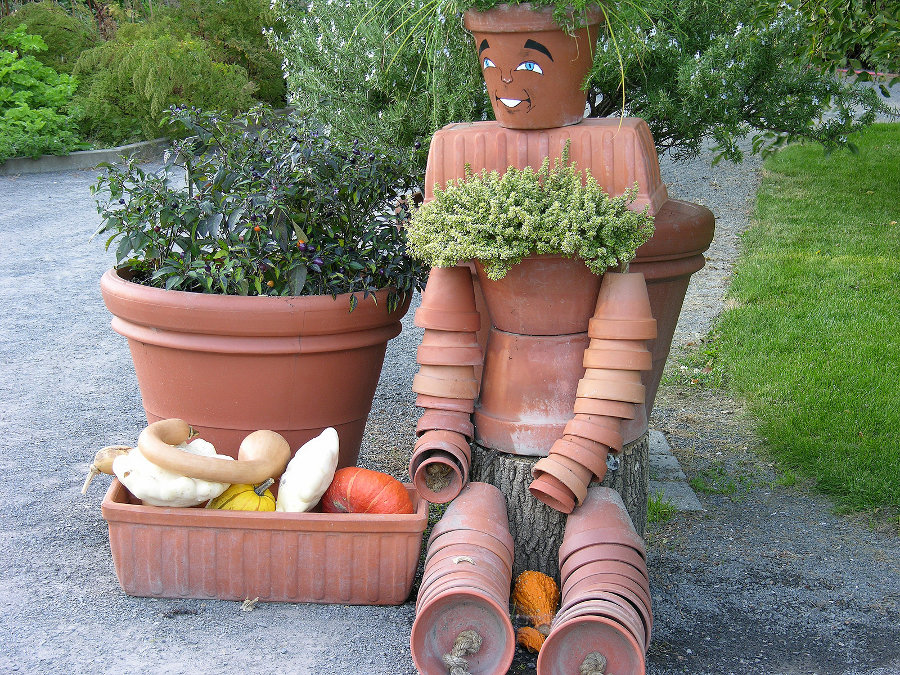February 21, 2012


As spring approaches and the northern hemisphere begins to bloom again, consider making your home breathe with life. Container gardens add greenery to small and confined spaces. They also add vertical dimension to large open spaces. If you select the appropriate garden plants for your part of the country, you can have fresh food and herbs for several months of the year. (Photo sourced from FreePhotosBank.com)
[nggallery id=117 template=carousel images=4][imagebrowser id=117]
As spring approaches and the northern hemisphere begins to bloom again, consider making your home breathe with life. No backyard, you say? No problem! Try out container gardening to maximize the space you have.
Why Should I Create a Container Garden?
Container gardens work in a variety of spaces, and can green your apartment, deck, balcony, or yard. They also add vertical dimension to large open spaces. If you select the appropriate garden plants for your part of the country, you can have fresh food and herbs for several months of the year.
A container garden saves some money on your grocery bills, and improves your home’s health. Seeing your plants grow and thrive can be a great source of pride and satisfaction, and you can share the harvest with your family and friends.
Container gardens are also very affordable. For just a few dollars per unit, you can grow quite a diverse variety of vegetables and herbs. Container gardens add visual appeal to any space, especially the delectable colors of the plants themselves.
Starting Your Container Garden
You do not need a fancy or expensive container. A clean 5-gallon plastic pail from a home improvement store or a clean and non-hazardous repurposed container can be a great vessel for a tomato plant. Some folks choose to use large, decorative planting vessels.
Consider adding several drainage holes in the bottom of the pail, especially if you are going to keep the tomato or other plants outside and exposed to the elements. You can drill the holes or make them with a large nail and a hammer. Be sure to make the drainage holes before you assemble the container garden vessel. The information labels on the plant containers will provide guidance about sunlight, watering, and fertilizing. Large plants will need to be staked to prevent toppling.
There are a variety of potting soils and growing mixes available. Ask a greenhouse professional at the casino online home improvement store for recommendations based on your plant selections.
Never overcrowd the containers. A tomato seedling may look small when you plant it, but it will grow tall and wide. It also needs a lot online casino of water. You will probably need to water it every day or quite often, especially if you live in a hot and dry climate. Elevate the container with a few bricks or other flat and stable objects a few inches to allow excess water to drain. Drainage is essential for any container garden setup.
For more details, check out Rutgers University”s free PDF guide, or Colorado State University
Choosing the Plants
Some crops require a lot of space and water and are not suitable for container gardens. For example, do not try to grow watermelons or pumpkins. You will only be wasting your time and effort, which could be better spent on productive and more suitable container garden crops. You can also plant some crops in hanging pots. String beans are a great choice for hanging gardens.
Container gardens are best for crops that offer high yields throughout the growing season. It is not economically viable or worth your time to grow corn in a container garden. A typical corn plant yields about 1-3 ears, which is a lot of work for not much reward.
For an easy start, buy a starter tomato and/or other plants from a local home improvement store or nursery. There are many varieties available, including varieties specifically for container gardens. Commercial greenhouses did the prep work for you, so there is no need to start the plant from a seed.
Some of the best crops for container gardens are:
Herbs for the Container Garden
Herbs require very little space. Often times, various herbs are planted in the same container for convenience, simplicity, and visual appeal. Herb gardens can be placed in a sunny location inside your home.
Some herbs require much more water and sunlight than other herbs. Be sure to keep herbs with similar requirements together. Basil needs a lot of water and sunlight to thrive. Rosemary is tolerant to harsher conditions, and prefers drier environments. However, it still needs to be watered regularly. When you purchase starter herbs, the information label will provide details to help you select plants with similar growing requirements. You can plant similar requirement groups in the same containers.
Whatever crops and herbs you decide to use on your micro-plantation, you will have the personal satisfaction that you are being green and providing fresh food for your family. If possible, try to arrange your container garden in multiple levels to add visual appeal. The Hanging Gardens of Babylon may be long gone, but you can create your own personal green space in your corner of the world. Sierra Club Green Home encourages all readers to consider making a container garden and to spread the word.
Grow well and prosper.
For related articles, see:
Environmentally Friendly Gardening Supplies
Healthy Garden and Lawn Advice
© 2012 SCGH, LLC.
]]>